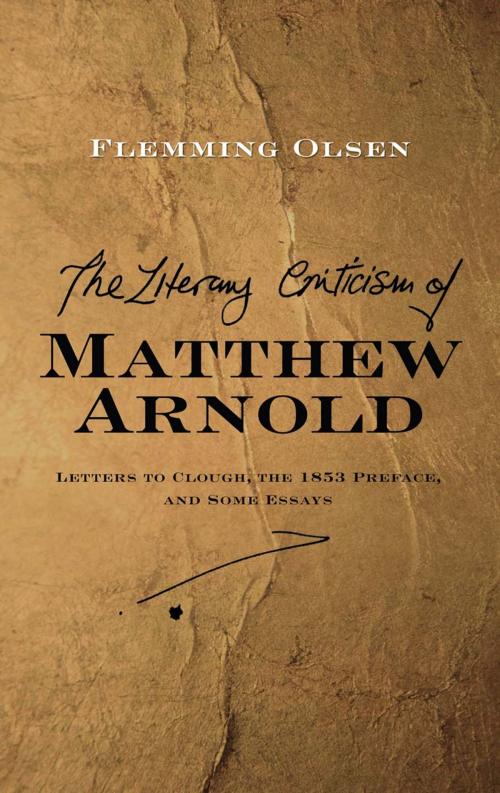The Literary Criticism of Matthew Arnold
Letters to Clough, the 1853 Preface, and Some Essays
Fiction & Literature, Essays & Letters, Essays| Author: | Flemming Olsen | ISBN: | 9781782841661 |
| Publisher: | Sussex Academic Press | Publication: | November 1, 2014 |
| Imprint: | Sussex Academic Press | Language: | English |
| Author: | Flemming Olsen |
| ISBN: | 9781782841661 |
| Publisher: | Sussex Academic Press |
| Publication: | November 1, 2014 |
| Imprint: | Sussex Academic Press |
| Language: | English |
Many of the ideas that appear in poet Matthew Arnold’s Preface to the Poems of 1853 to his collection of poems and in his later essays are suggested in the letters that Arnold wrote to his friend Arthur Hugh Clough. Literature was, in Arnold’s perception, meant to communicate a message rather than impress by its structure or by formal sophistication. Modern theories of coalescence between content and form were outside the contemporary paradigm. T. S. Eliot’s ambivalent attitude to Arnold—at once reluctantly admiring and decidedly patronizing—is puzzling. Eliot never seemed able to liberate himself from the influence of Arnold. What in Arnold’s critical oeuvre attracted and at the same time repelled Eliot? That question has led an in-depth analysis of Arnold as a literary critic. This book begins with an examination of Arnold’s letters to friend Arthur Hugh Clough and where “it all started” and proceeds with a close reading of the Preface to the Poems. A look at some of the later literary essays rounds off the picture of Arnold as a literary critic.
Many of the ideas that appear in poet Matthew Arnold’s Preface to the Poems of 1853 to his collection of poems and in his later essays are suggested in the letters that Arnold wrote to his friend Arthur Hugh Clough. Literature was, in Arnold’s perception, meant to communicate a message rather than impress by its structure or by formal sophistication. Modern theories of coalescence between content and form were outside the contemporary paradigm. T. S. Eliot’s ambivalent attitude to Arnold—at once reluctantly admiring and decidedly patronizing—is puzzling. Eliot never seemed able to liberate himself from the influence of Arnold. What in Arnold’s critical oeuvre attracted and at the same time repelled Eliot? That question has led an in-depth analysis of Arnold as a literary critic. This book begins with an examination of Arnold’s letters to friend Arthur Hugh Clough and where “it all started” and proceeds with a close reading of the Preface to the Poems. A look at some of the later literary essays rounds off the picture of Arnold as a literary critic.















